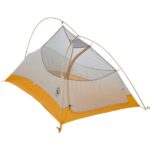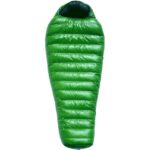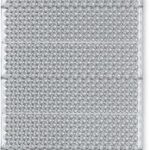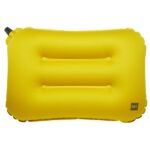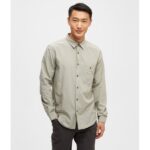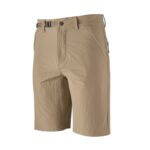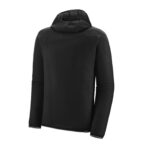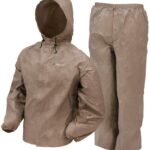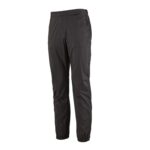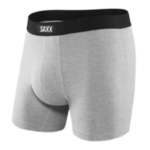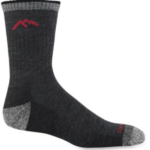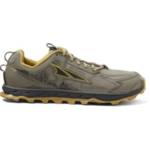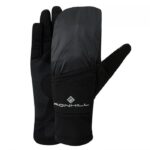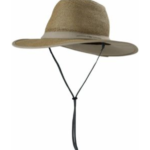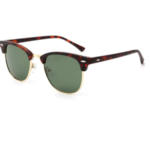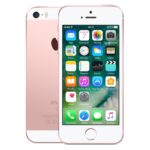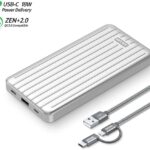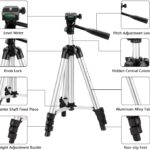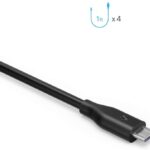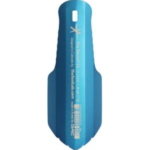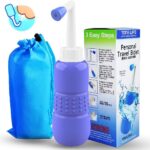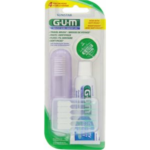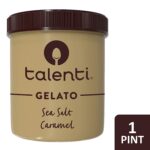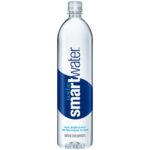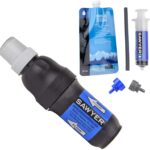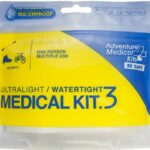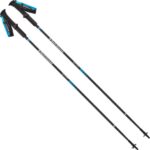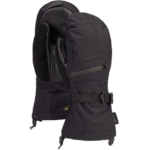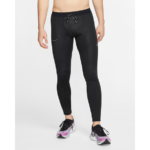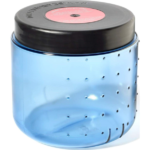Pacific Crest Trail Gear: The Ultimate Thruhike Packing List

In this post, I’m sharing the list of gear that I used on my 2019 northbound thruhike of the Pacific Crest Trail, which took me 99 days between May 10 and August 18. Overall, I’m happy with how my gear performed, and would feel pretty good about recommending this gear list to other hikers. Having said that, it was my first thruhike, which means that it was a learning experience, and I have some notes at the end of the list about what I would change with the benefit of hindsight.
While I haven’t tabulated the exact weights of all the items in my Pacific Crest Trail gear list as some gear junkies might, I put my entire pack on a luggage scale and it weighed about 12 pounds, including my camera and tripod. The snow gear I list below, which I only carried between miles 702 and 1017 of the trail, is over and above the 12 pound base weight I started the trail with.
Pacific Crest Trail Backpack and Tent
Pacific Crest Trail Sleep System
Pacific Crest Trail Clothing
Clothing
Bug Head Net

Coghlans Mosquito
Pacific Crest Trail Electronics
Pacific Crest Trail Photography Gear
Pacific Crest Trail Toiletries
Pacifc Crest Trail Cookset
Pacific Crest Trail Accessories
Pacific Crest Trail Snow Gear – Miles 702 to 1017 only
Thoughts on my Pacific Crest Trail Gear
If I had to do the whole thing over again, these are the changes I would make to the above list:
I would bring a bigger bear canister. This was bay far my biggest gear-related mistake on this trail. I thought the Bear Vault 450 would be big enough to hold all my food between resupplies in the Sierra, but I was so wrong. The cold temperatures, slow hiking pace in the snow, and challenging morale meant that I spent several days going hungry in the Sierra section of the trail, which wasn’t fun at all. I would recommend bringing something bigger like the Bear Vault 500 or Bearikade Weekender.
I would bring a lighter tent. While the Big Agnes Fly Creek is a great shelter that has never failed to keep me dry and cozy, the double-wall, freestanding design is overkill for a climate as dry as the Pacific Crest in summer. Even though the Fly Creek is light compared to most conventional tents one can find at MEC or REI, it’s significantly heavier than single-wall tents or tarp+bivy combos that you can get from cottage ultralight manufacturers that would be more appropriate for the infrequent rain and low humidity of the mountain West.
I would bring waterproof socks for the Sierra. 2019’s record-breaking snow pack in California meant that I was walking on snow for 30 days straight of my thruhike, frequently crossing swollen streams of icy glacier-fed water. In those conditions, I had plenty of awful early mornings with freezing toes and even ended up getting a bit of frost nip. While the conventional wisdom for those conditions might be to wear waterproof boots, those just aren’t appropriate for thruhiking. They’re uncomfortably stiff for walking 30-mile days, and it’s not practical to take them off for every stream crossing on days when you might have dozens of them. To prevent the frostnip I ended up getting in my toes and stay comfortable, I would recommend wearing waterproof socks for the Sierra section of trail, like these from Bridgedale.
Other Notes on my Pacific Crest Trail Gear
For those that are interested in the thinking behind some of the gear choices I made, here are some details:
No, the Z Lite isn’t comfortable. On all my shorter backpacking trips, I bring an inflatable sleeping pad, but decided on the closed-cell foam Therm-a-rest Z Lite for the PCT. Sleeping on it kind of sucks compared to sleeping on air. However, foam pads can’t fail, while a failure is virtually guaranteed for an inflatable pad over the course of a thruhike. In addition, I loved being able to whip out the Z Lite for lunch, naps, and stretching whenever I wanted. Picking the right backpacking gear is always about balancing pros and cons, and on this hike I was happy to choose reliability and modularity over comfort.
Yes, my sleeping bag was needlessly warm for most nights. Rated, for 10-degrees Fahrenheit, the Western Mountaineering Versalite is a lot of sleeping bag for most of the Pacific Crest Trail. However, there were some nights in Southern California and in the Sierra when that rating was absolutely necessary to sleep well, and I’m happy I brought it. While I’m willing to sleep a little cold on shorter trips, I realized that if I was going to be living outdoors for an entire summer, I needed to be able to rely on cozy sleeps to continue to keep morale up and hike hard during the day.
No, I didn’t bring a stove. Instead of doing any cooking on the trail, I opted to bring just a Talenti Gelato container in which I cold-soaked my food. Cold-soaking refers to the cooking method of putting “instant” foods like packaged noodles and mashed potatoes into cold water until they’re re hydrated. While many hikers find themselves unhappy without hot food, I really appreciated the simplicity and convenience of cold soaking.
My electronics-charging setup was optimized. With a 45-Watt wall charger, a high quality USB C-C cable, and a power bank that supported pass-through charging, I was able have fully charged electronics and 10,000 mAh of spare juice after spending only 2-3 hours in town, which was critical when I was trying to push big miles at the end of my thruhike. If you bring the 5-Watt wall charger that comes with your phone or a power bank that doesn’t support Power Delivery charging, you may need to spend up to eight hours in town just to charge your gadgets.
Yes, a tripod. Every single other thruhiker I met that was carrying a camera seemed to have sent their tripod home (if they started with one at all). For me, my interest in astrophotography, plus the fact that I was mostly hiking alone and so needed to model for my own photos meant that the tripod was invaluable.
Bidet instead of TP. I brought the Brondell Portable bidet, but ended up throwing out the bottle and simply attaching the spout to a Smartwater bottle. Using a bidet means that you can Leave No Trace without having to pack out dirty TP in your pack. But more importantly, using water to clean up back there does a more thorough job than TP for the sake of hygiene and avoiding chafing. A detailed demonstration of the technique is given by Andrew Skurka.
I took the “frame” out of my pack. The Hyperlite Mountain Gear Southwest comes with two aluminum stays that act as a frame to transfer the load of the pack onto your hips, but I found them to be unnecessary at the weights I was carrying, so I took them out to save a couple ounces. Not only that, but I felt more agile and comfortable with the flexibility of a frameless pack. However, that meant I had to be more careful about packing to make sure nothing was poking me in the back, and that my pack felt balanced.
My Pacific Crest Trail Gear in Summary
I brought a 12-pound pack on the PCT, including camera gear, and I was pretty pleased with it. Because my bear can was too small, I was hungry in the Sierra. My feet got too cold in the Sierra, and my double-wall freestanding tent was probably overkill.
I made some compromises and balanced decisions related to my sleep system, and I carefully researched my electronics-charging technology to make sure I could charge my stuff quickly and not be stuck in town. Instead of using paper, I cleaned up after going #2 with a bidet

